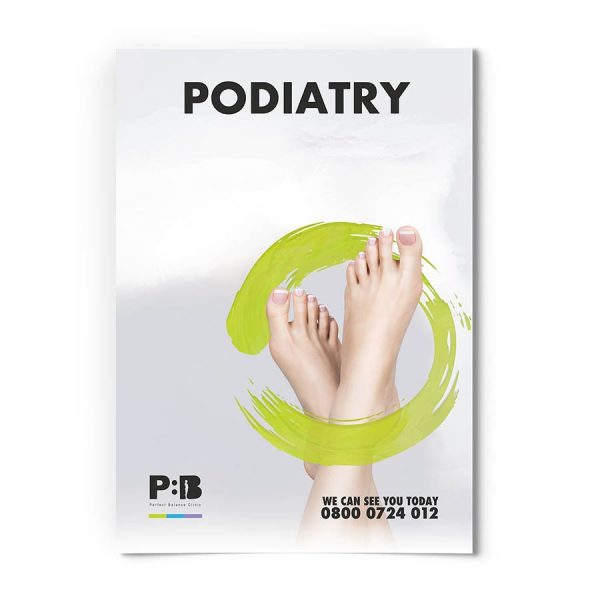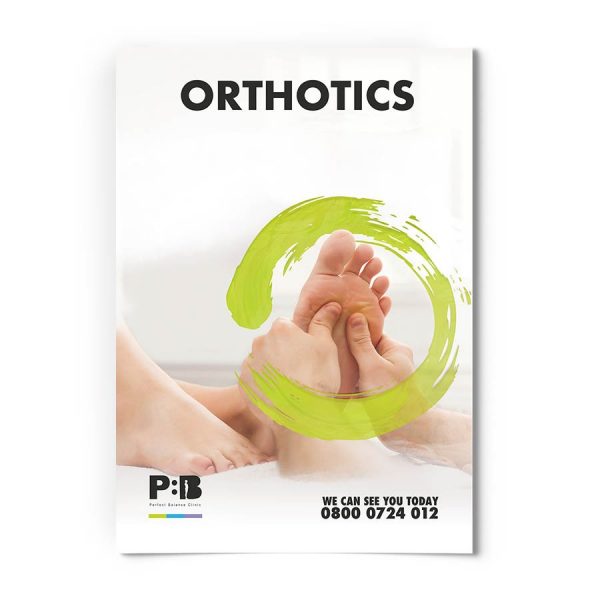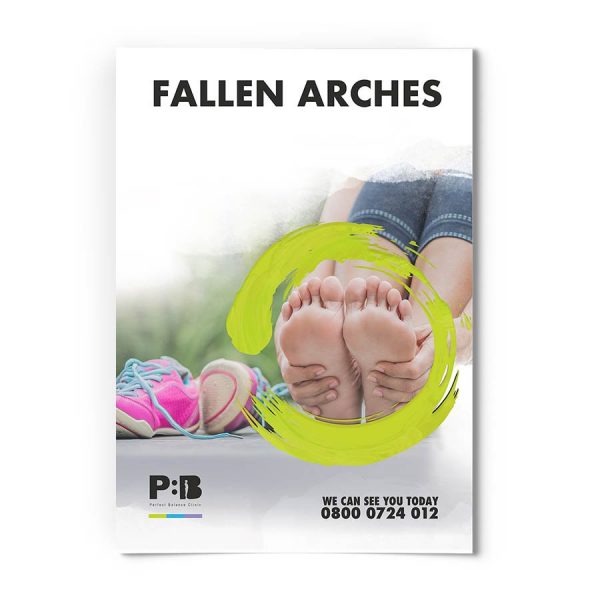What are Fallen Arches?
Fallen arches, commonly referred to as flat feet, occur when the natural arches of the feet are significantly low or absent. In certain instances, the arches may even touch the ground, which can lead to discomfort. The foot naturally has a curve or arch to it, often referred to as an in-step. This refers to the area of the foot that remains elevated above the ground while the rest of your foot is in contact with the surface.
In young children, it’s common for them not to have a visible arch. This is because the foot is still forming, and the arch is typically cushioned with baby fat and soft tissue. The arch usually develops as they get older. However, in some cases, individuals naturally have flat feet, and they never develop a visible arch. This could be inherited from parents.
Sometimes in adulthood, an individual with well-formed arches may notice that they are gradually lowering over time due to overuse or injury. This is a condition called Adult Acquired Flatfoot Deformity (AAFD) and is more likely to be associated with pain and injury.
What Causes Adult Acquired Flat Foot Deformity (AAFD)?
Posterior Tibial Tendon Dysfunction
The most common cause of AAFD is weakness or damage to the posterior tibial tendon. This tendon starts as a muscle next to the calf and runs down the inside of the lower leg, attaching to the bones underneath the foot on the outside border. The main purpose of this muscle is to support the foot to maintain the arch while you are standing and walking. If the tendon is damaged or weakened, it causes the arch to slowly lower over time.
Injury
Injuries to the ligaments of the foot can cause the joints to change alignment. Ligaments work by supporting the bones and limiting excessive movements. If ligaments get torn, they can result in a flat and painful foot. It is more common to occur in the middle of the foot but it can also present at the back of the foot behind the arch. Fractured or dislocated bones in the midfoot can also result in a similar presentation.
Other Medical Conditions
If you have diabetes or rheumatoid arthritis and are worried about changes in your foot, such as flattening over time, it’s essential to consult with a podiatrist, general doctor, or rheumatologist. They can offer valuable insights and help you manage any foot-related issues associated with your condition.
Symptoms of Flat Feet
Flat feet are usually nothing to be concerned about if a fallen arch causes no problems and is not painful, then treatment may not be needed. However, occasionally flat feet can be associated with symptoms that may include:
- Painful or swollen feet
- Ankle, knee, hip, and lower back pain (usually worse with higher levels of activity)
- Feet that get tired easily (fatigued)
- Shoes that get worn out too quickly
- Pain along the bottom of your foot
- Pain in your ankle that worsens with physical activity
- Painful bumps on the top or inside of your foot
- Difficulty finding shoes that fit well
- Blisters and calluses from shoes
Diagnosis of Flat Feet
If your foot or leg hurts or feels uncomfortable, a podiatrist can examine them to find out what’s causing the problem. They will look at the muscles and bones in your feet and legs, see how they move, and check for any weaknesses or imbalances. Sometimes, they might want to take pictures of your bones, muscles, and tissues using X-rays or an MRI to learn more.
Treatment for Fallen Arches
In most cases, there will be no need for surgical intervention. Conservative treatments such as orthotics, braces, sports taping, and exercises are very effective ways to resolve the underlying problem and reduce the associated symptoms.
Orthotics can be used inside your shoes to help realign the foot and reduce any excessive movements that may be aggravating your condition. This, in turn, will help the function and alignment of your ankles, knees, hips, and lower back. These can be altered slowly to gradually adjust the foot and improve the way you walk (gait). A podiatrist is a foot specialist and is best qualified to advise on orthotics. An osteopath or physiotherapist may also be able to offer rehabilitation and treatment, in addition to stretching exercises to help keep the foot tendons stretched and working effectively.
In severe cases, however, surgery may be needed to repair the foot.
Self-Care for Fallen Arches
There are many ways to look after your feet. First of all, stretch them regularly to keep the range of motion needed for functional walking. You can try rotating the foot in circles clockwise then counterclockwise – this should be done in a slow and controlled manner. Regularly stretching your calf muscles and hamstrings will also help.
When you’re in pain due to your flat feet, applying an ice pack wrapped in a cloth to the area can provide relief. This method helps reduce discomfort. Over-the-counter pain medications can also be an option, but remember to read the instructions before using them.
Always wear well-fitting supportive footwear (e.g. running trainers) and avoid flip-flops and high heels. Finally, avoid excessive activities and high-impact sports if you are suffering from pain and discomfort in the foot.
Conclusion
Having fallen arches or flat feet is a common condition that can affect people of all ages. Although it may not always cause pain or difficulties, it’s essential to understand the possible effects and take proper measures to handle the condition. By receiving the right care and treatment, individuals with flat feet can live active and healthy lives. Remember, you have control over your health. Stay informed, seek guidance from professionals when necessary, and ensure proper foot care. Your feet carry you through every step of your life’s journey.
Please remember, if you need any further advice then you can email us at advice@pbclinic.com.
For more information about Fallen Arches
This article was written by our team of specialist therapists at Perfect Balance Clinic. If you would like more specific advice about how our team can help you with this condition or symptoms you may be having, please complete the contact form below and one of the team will get back to you shortly.
Here are some of our E-Books to help you
References
American Academy of Orthopaedic Surgeons, http://orthoinfo.aaos.org/topic.cfm?topic=a00173 [Accessed 19/07/2016]
NHS Choices, http://www.nhs.uk/conditions/flatfeet/Pages/Introduction.aspx









